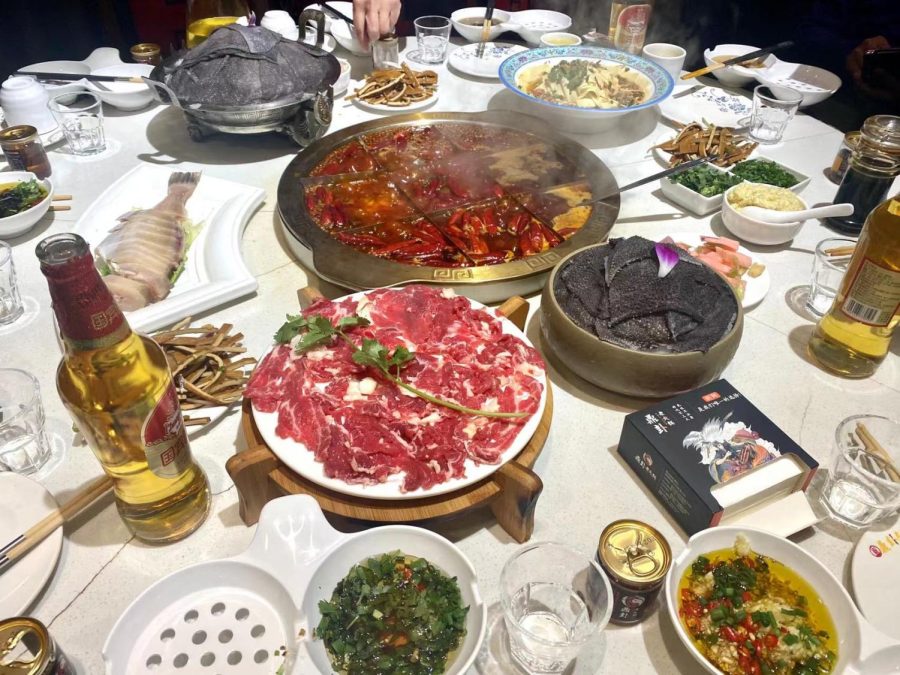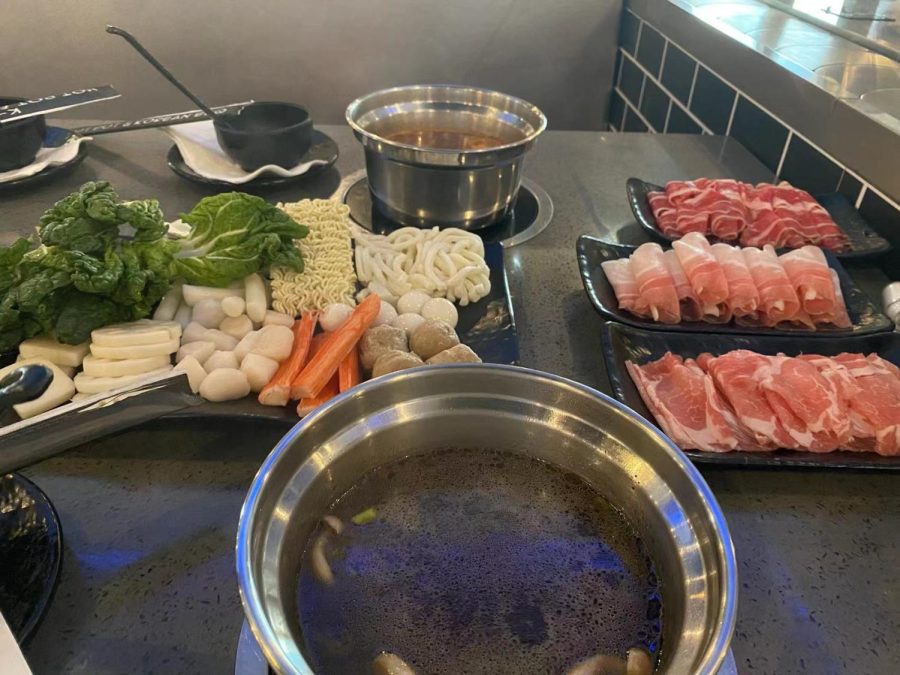Hot pot, also called “Huo Guo” in Mandarin, is one of China’s authentic cuisines and most popular foods.
Hot Pot Trend Sweeps the World
It’s Chinese New Year again, and I’m sitting at the table with a huge steaming pot at the center. Beyond the table’s smoky haze, children are playing around the table. I could still hear the sounds of their laughing adults talking. All activities revolve around the steaming pot in the middle of the table. Hot pot, also called “Huo Guo” in Mandarin, is one of China’s authentic cuisines and popular food for both young and old.
Hot pot is a cooking method in which a pot is used as an apparatus to boil water or soup with a heat source to cook various types of food. A typical hot pot includes scalding the ingredients like meats, seafood, vegetables, soy products, mushrooms, and egg products with a unique soup base. Some of them are also dipped in seasonings and eaten together.
The hot pot has evolved over time. The tripod of the Zhou Dynasty (1046-256 B.C.E) may be the earliest prototype of the hot pot. The nobles of the time each had a unique bronze pot called Ran Lu. The main part of the Ran Lu was a small stove with a small pot on which charcoal was burning. Later, during the “Three Kingdoms Period” (200-280 AD), a hot pot made of copper was created, which is generally considered the origin of the hot pot. Hot pots became very popular in the Qing Dynasty(1636-1912). The emperor often ate hot pot at banquets for ministers, and hot pot gradually became a symbol of noble status.
In the modern era, the hot pot is beloved because of the dry and cold climate in the northern part of China. People feel that a hot pot brings them warmth, especially in the cold winter. In addition, hot pot restaurant owners are constantly innovating their business strategies. As a result, there are “numb, spicy, hot” offerings, known as Chongqing hot pot, the archetype of Southern hot pot. Instant-boiled mutton represents the staple of the Northern hot pot and new hot pot styles.
Hot pot for the Chinese has become more than just a standard dish, but also a culture and a symbol of family reunion. I looked back and in front of me were my cousins having a rowdy time around the hot pot. Hot pot has accompanied our family through every Chinese New Year. Hot pot is not only a delicacy in China but part of the rich food culture. Families gather around a steaming hot pot to chat and eat together in a warm and cordial atmosphere, suitable for the traditional Chinese culture of a family reunion.
Recipe:
Since there are many different types of hot pot, here is a way to make Asian Hot Pot:
Ingredients:
- Hot pot soup base (with water) or stock
LEAFY GREENS (CHOOSE 1-2):
- baby bok choy(thoroughly washed)
- napa cabbage (washed, cut into 1-2 inch pieces)
- choy sum (thoroughly washed)
OTHER VEGETABLES (CHOOSE 1-2):
- lotus root(cut into 1/4 inch thick half moons)
- potato (cut into 1/4 inch thick half moons)
- sweet potato (cut into 1/4 inch thick half moons)
MUSHROOMS (CHOOSE 1-2):
- enoki mushrooms(slice 1/2-1 inch of the base off, and separate the bundle of enoki’s into smaller more manageable bundles
- wood ears (soak to reconstitute, rinse any dirt or sand off, and remove any woody ends)
MEAT & SEAFOOD (CHOOSE 2-3):
- beef(brisket, short rib, ribeye, sirloin, flank steak, thinly sliced against the grain)
- pork shoulder or loin (thinly sliced)
- pork belly (thinly sliced)
STAPLE STARCHES (CHOOSE 1-2):
- mung bean vermicelli (soak in warm water for 10 minutes)
- rice vermicelli (boil to par-cook, rinse in cold water, drain)
- thin fresh white noodles
TOFU & BEAN CURD (CHOOSE 2-3)
- bean threads(AKA dried bean curd sticks; soak in warm water for 3-4 hours, cut into 2-inch pieces)
- soy puffs (left whole or cut in half)
- frozen tofu (cut into 1-inch pieces)
DIPPING SAUCE INGREDIENTS
- chinese sesame paste or sauce
- peanut butter or peanut sauce
- soy sauce
- sha cha sauce (it is a Chinese condiment made from oil, garlic, shallots, chilies, and seafood and can be purchased in local asian markets.)
- sesame oil
Only a portion of the ingredients are listed here. To view the complete ingredient list, click here
Instructions:
- Place boiling soup base or stock in a wide, shallow pot at the center of the table on a portable electric burner.
- Place individual plates of raw ingredients on the table, along with dipping sauce ingredients.
- Have each diner mix their own dipping sauce while the pot of soup comes to a boil. Once boiling, begin adding ingredients to the pot. Be sure to cook ingredients through before consuming, and allow the pot to boil for at least 30 seconds to 1 minute after adding any raw meat or seafood.
Tips: Prep time will vary depending on the number of ingredients you decide to serve, as well as whether the ingredients must be pre-soaked, usually it takes 40 minutes and it serves 4-8 people.

